No. 22


Issue

It’s hard to believe that the end of my four years on MODE has arrived. It is bittersweet, with the real world waiting on the other side of the threshold, but what us seniors are leaving behind are some of the best memories of the last 22 years. MODE allowed me to find my home at Fordham and my creative outlet . From the early days of the pandemic to now, MODE has offered me comfort and release, and I am forever thankful for each and every person it has introduced me to in the Fordham Community.
It is my great pleasure to welcome you all to MODE SS 2024: Eternal Glamour. This issue is inspired by the glamour and elegance of Hollywood. From cave drawings to cathedral ceilings Europe, the artists who created these works had no conception of how long their craft would inspire humanity, but the Hollywood stars had the unique perspective of knowing they would leave a mark that lasts forever. The idea of legacy is especially interesting as graduation nears each passing day, and I could not be more proud of the legacy that MODE is leaving on the Fordham community.
I welcome you to not just read but immerse yourselves in the pages that follow. Every person involved with the creation of this issue is immensely talented and has so much to share through both their own experiences and their insights into our culture. This issue took so many people to create. Thank you to Elise, for your tireless commitment to the magazine and poise in creating my favorite MODE cover to date, Amelia and Jenna, thank you for helping create a beautiful magazine from halfway across the world. And lastly thank you to our entire E-Board and its newest member, Harmonie, for your dedication to MODE’s success.
Love always, Signing off, Carson Waldron
DearReader,
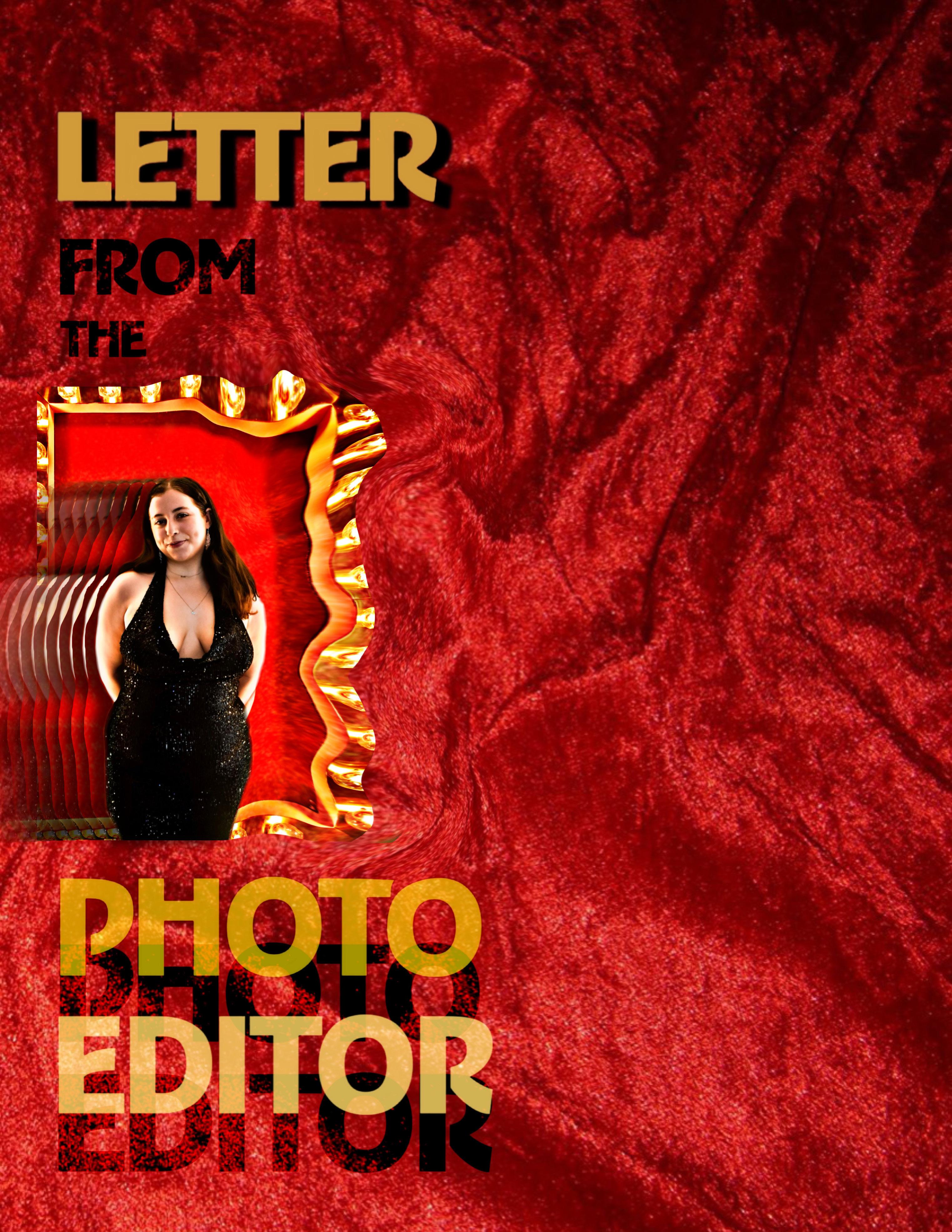
DearReader,
For the past four years at Fordham, MODE Magazine and photography have always been a constant. I am so grateful to have been a part of the E-board for seven out of eight of those semesters. I have met and worked with some of my best friends and the most talented and creative people through MODE. Each issue’s theme has inspired me to reach new heights in my photography. I owe MODE for allowing me to grow creatively and continue my passion of photography no matter what I’m going through.
Thank you to Danelia Fame, my orientation leader all those years ago, who told me to join MODE. You are the reason I joined MODE and orientation and now have memories I will look fondly back on forever.
Carson, thank you for handling all my questions and creating beautiful visions with me. I am so proud of what you have made.
E-board, I will miss you all so much. Seeing our hard work and individuality come together in two outstanding issues this year is so rewarding.
Gen-board, you are the glue that keeps Mode together. Your incredible work in many disciplines is what makes the magazine so special each and every semester.
Thank you to everyone for your hard work. I am so proud of everyone and so sad to leave this magazine, but I cannot wait to see what it becomes. I hope you enjoy this semester’s cover (and back cover:) as much as we do. Keep being creative and pushing for your vision and story to be told!
With Love, Elise Anstey
DearReaders,
I am truly so beyond thankful to have spent another semester as one of your creative directors. It has been a thrilling experience to help construct this magazine from 3500 miles away, and I am constantly amazed at the creativity, talent, and passion that comes into building this phenomenal project. You all are amazing! Seriously! Every semester I get to spend working alongside such a wonderful collection of minds reminds me, once again, how special MODE is. I want to thank you all for making the last few months (and every semester otherwise) so fun and enjoyable.
MODE holds such a special place in my heart, and I want to extend my gratitude to you all- this is possible only because of all of you! Additionally, I owe an extra special set of Thank You’s to the beyond talented group I get to work alongside. Carson, Jenna, Elise, Harmonie, and the rest of the E-Board, you collectively make up some of my favorite people! I am so indebted to you all, and your talents motivate me everyday. Thank you from the bottom of my heart. Thank you to ALL of you!
Allmylove, Amelia

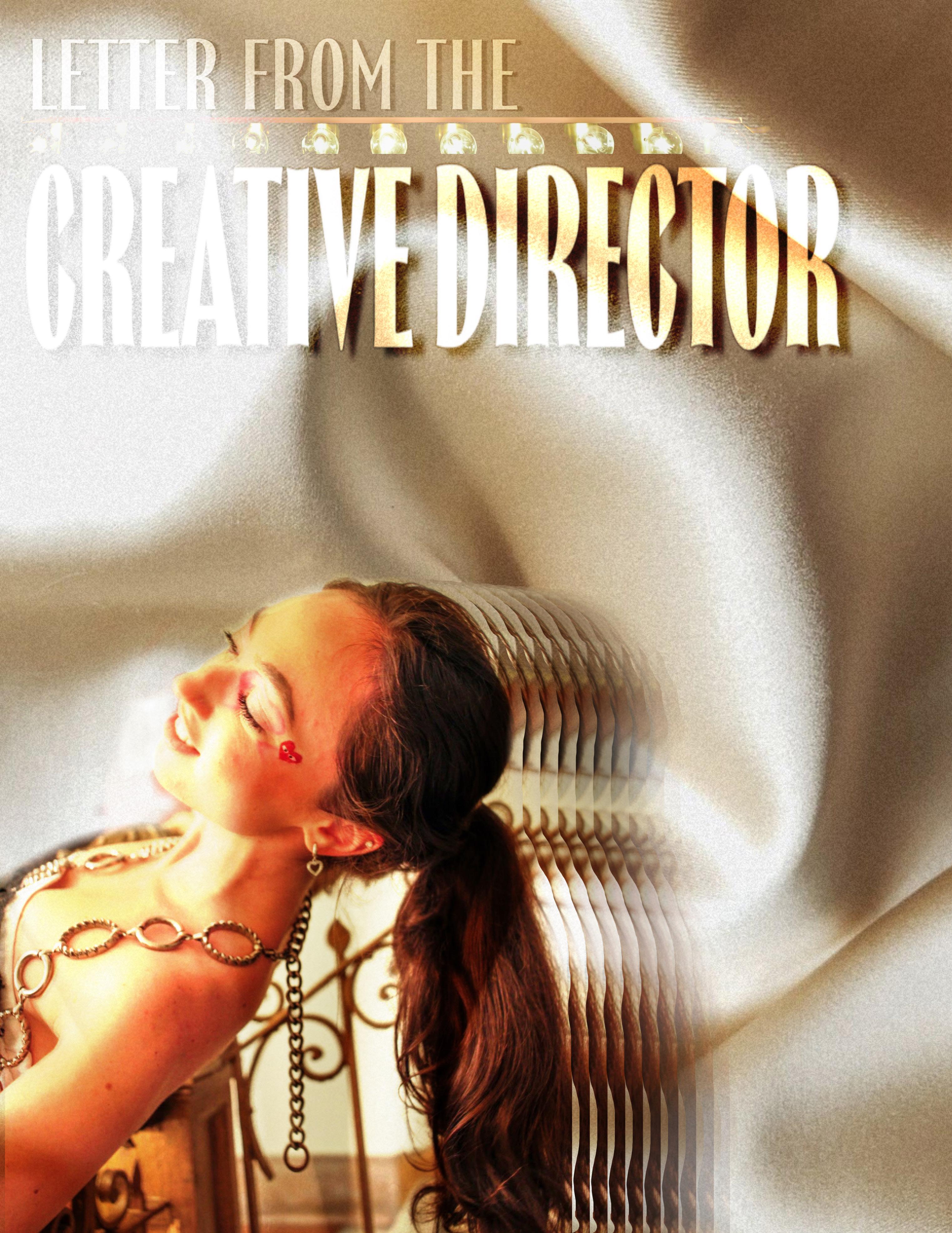
DearReaders,
MODE is my favorite part of every semester at Fordham. Although I have been abroad throughout the creation of this edition, I have loved watching the process unfold even from the land down under. Shout out to my cocreative director, Amelia, who did the absolute most this semester to make up for our timezone differences and create this beautiful piece of artwork. Congrats to the entire MODE team, and best wishes to our graduating seniors!
Love always, Jenna <3

8

Sweat became glistening beads embracing your face, displaying the passion of disco as it dripped onto lit-up floorboards dusted with boot scuffs, liquor drops, and lost pieces of glitter from your bellbottoms and pantsuits, an ode to the sacred love of music and desire communing together under one roof, Studio 54.
The doors opened as it became an iconic symbol of the 70s disco era, housed on West 54th, disguised as another black building blending into the streets of Manhattan. However, upon entry, the interior glitz and glamour reveal why the nightclub still captivates time, despite its closure in the 80s. The club pulsed with life of vibrant lights, noise, and diversity in its star-studded crowd, drawing in an eclectic mix of influential starry-eyed music enjoyers, artists, and pop culture staples of the time such as Andy Warhol, Cher, Mick Jagger, Barbra Streisand, and Elton John, hoping to watch Diana Ross perform.
In an era of prejudice, fear, and political turmoil in America, it was an inclusive birthplace of freedom, the bright lights encouraging everyone to be anyone. At least 20% of the crowd would be gay men, with 10% lesbians and trans on a given night. Sexual freedom exuded in every part of the space as bathrooms, balconies, and even the dance floor hosted a mecca for passion. In a time where it was terrifying to be different, the club welcomed it with open arms and music, with dance allowing people to be protected and open, safe and explosive. With space for inclusivity and extravagance, the main star of the dancefloor focused on an extravagant art display, “Man in the Moon.”
Descending from the ceiling, it showered its dancers underneath in glitter, almost as if blessing a protection of the daze that the club carried, sealing the memory forever in the room before its dancers would break free out the doors the next morning. Unfortunately, as all wonders come to a tragic end, the club faced legal troubles and financial issues, which led to its closure in 1980. Despite this, Studio 54 remains a symbol of the 70s, reminding the world of its fight for sexual liberation, inclusion, love, and dance, popularizing the disco movement, and fashion, and providing a home to all who entered, the remains of glitter reminding them why they partied at Studio 54.
The End of the
Written By Griffin Bilello

Now, while it is true that production studios would control what actors ate, how they dressed, who they surrounded themselves with, and the roles they played, nothing came close to this ethical catastrophe that was detrimental to the queer community. Lavender Marriages were marriages arranged by studios that forced queer actors to marry members of the opposite sex and hide the truth of their sexuality. While this demand was disgusting enough, according to History Defined, actors like Rock Hudson were even threatened to be outed and were forced into Lavender Marriages to avoid ruining their careers. What if one refused to comply? Tough luck. Famous actor William Haines rejected this ideology and lived his life out and proud with his partner Jimmy Shields. Despite public knowledge of this relationship, media company MGM, whom Haines was signed to, forced him to enter a Lavender Marriage or lose his contract. Haines chose love, but lost his coveted and once in a lifetime career, a choice he should have never had to make.
At the end of the day, we still can’t deny how influential and glamorous Old Hollywood was, but maybe we can start appreciating it with acknowledgment of the things that went on behind the scenes that we weren’t meant to see, and strive to make our own magic in this world better than how we used to.
Photographed by Annabelle Hochberg
 Modeled by Andy Meeker & Julia Patterson
Modeled by Andy Meeker & Julia Patterson
10
Styled by Baba Sogbetun Layout by Grace Biesterfeld
Lavender Lavender Lavender Lavende Lavender


11
Put Them on the Big Screen
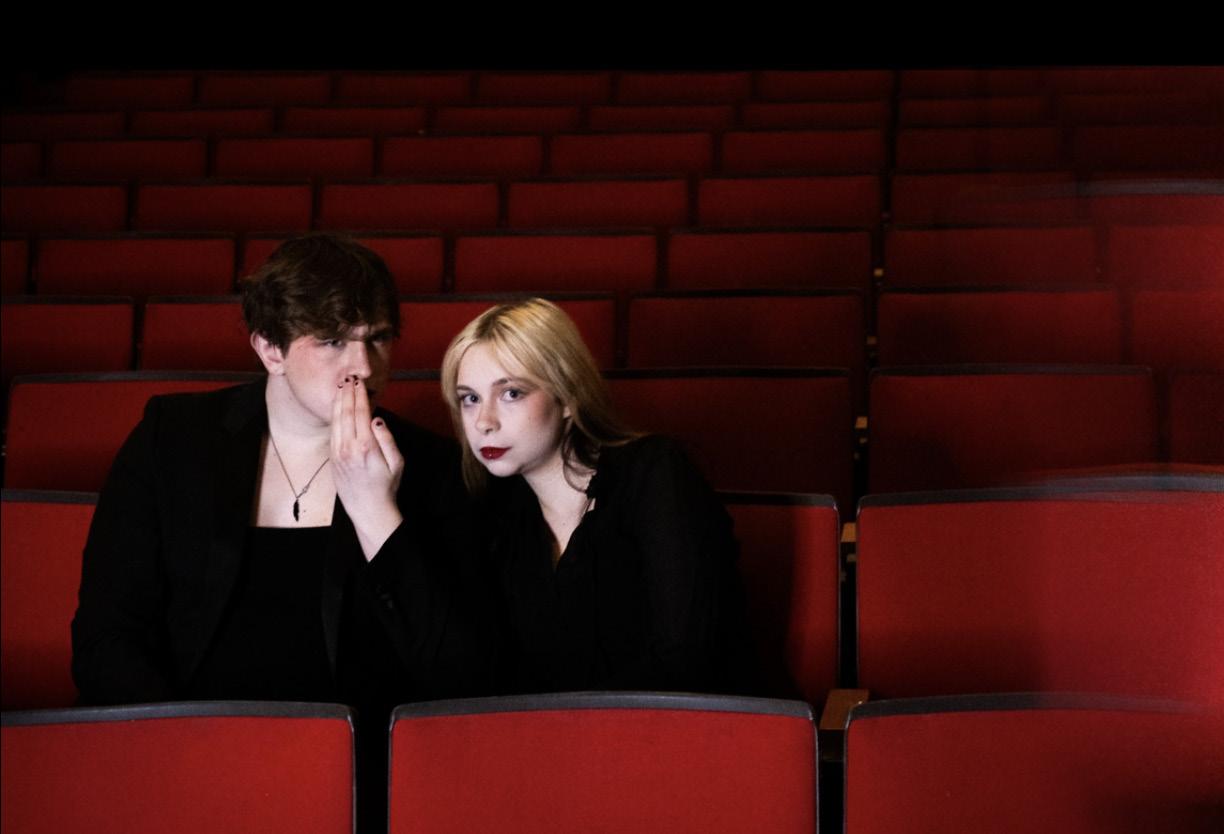
Representation has been a hot topic in media since the dawn of Hollywood. This has been a shifting issue, but nowadays, this conflict has narrowed its sights on LGBTQ+ stories. We’ve all heard someone say “I don’t mind the gays, just don’t go shoving it in my face!” But that’s exactly the issuewe should be putting LGBTQ+ characters in the forefront of media, especially in a time where we see lawmakers writing us out of history. Representation not only reflects society- it shapes it. Media, whether it be newspapers, books, movies, or Instagram, reflects the standing of our society. Despite
Written By Henry Pelmas
the fact that the first openly queer Oscar winner was in 1986, almost four decades later, the topic of queer bodies in film remains contentious.
As someone who’s been out as nonbinary for about two years now, it was just one year ago I saw the first nonbinary Grammy winner. If you look up nonbinary Oscar winners, there been one ever, as well as one Wikipedia lists under “Speculated to be LGBTQ” which leaves much to be desired. Don’t get me wrong, these are steps in the right direction, but Hollywood is a big world. Where are the characters, leads, and awards? I’m not talking about
the headline every few months that says “Blockbuster film casts nonbinary actor!” who delivers one line and gets misgendered throughout the entirety of production and promotion, I’m talking about placing nonbinary stories in the central focus. Nonbinary stories are uniquely powerful- adjusting to life outside the gender binary requires adapting to a new vision of the world, an understanding that the way you have been labeled your entire life does not fit who you truly are. Rejection of your assigned identity in order to craft of your own. Doesn’t that already sound like a perfect character arc?
 Photography by Wesley Scott
Modeled by Henry Pelmas and Audrey Ho man
Styling and Makeup by Lauren Walczyk
Photography by Wesley Scott
Modeled by Henry Pelmas and Audrey Ho man
Styling and Makeup by Lauren Walczyk
13
Layout by Caroline Abella
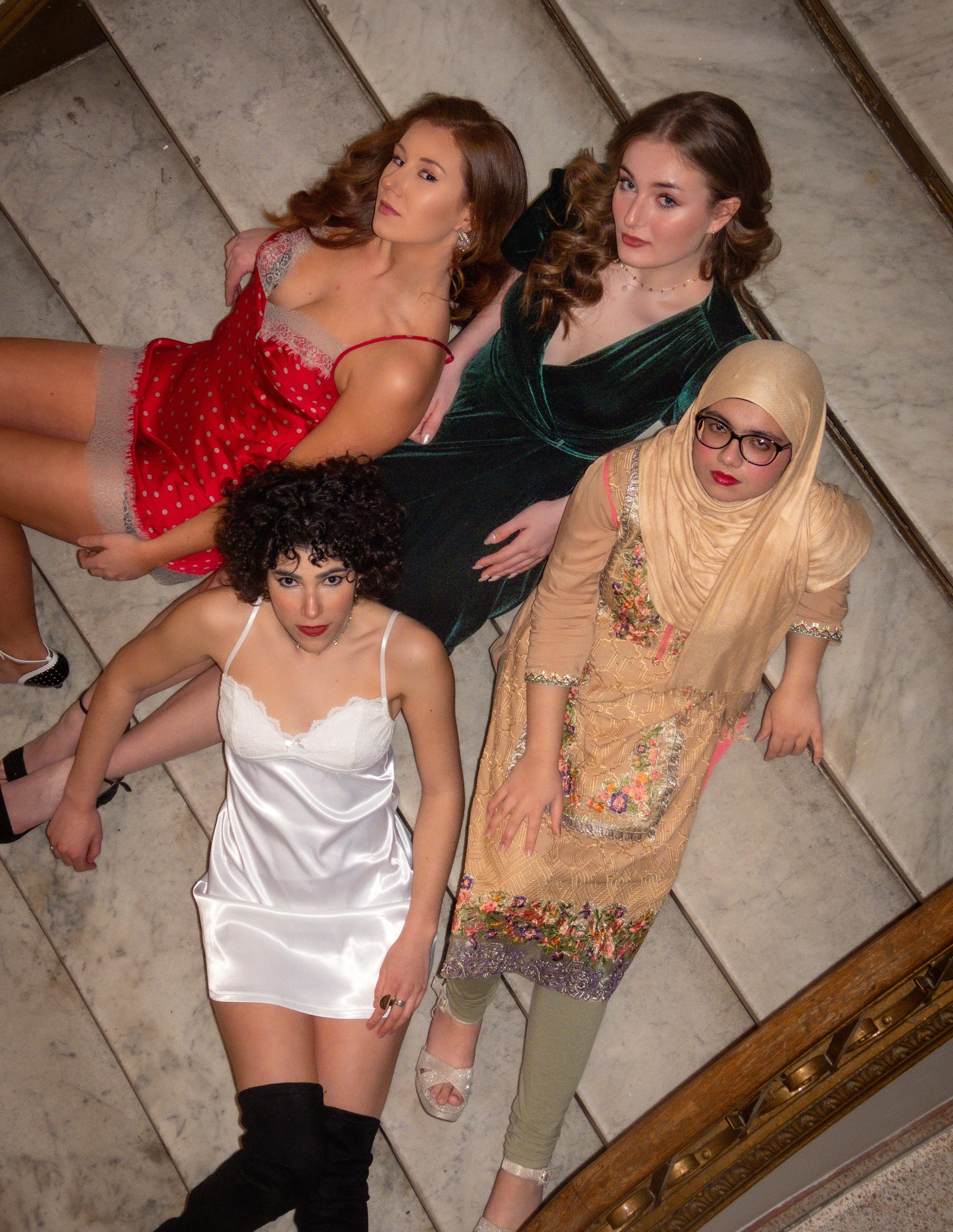 Written by Julia Patterson
Cogley
Photographed by Niamh
Modeled by Maia Munich, Kamryn Chubb, Emma Leonardi, Haniyyah Usmani
Styled by Kamryn Chubb
Make-Up by Molly Fitzpatrick
Written by Julia Patterson
Cogley
Photographed by Niamh
Modeled by Maia Munich, Kamryn Chubb, Emma Leonardi, Haniyyah Usmani
Styled by Kamryn Chubb
Make-Up by Molly Fitzpatrick
14
Layout by Laura Rodriguez

The Curious Case of Evelyn Hugo
In 2019, as a new audiobook lover and closeted lesbian, my mom ironically suggested I listen to The Seven Husbands of Evelyn Hugo by Taylor Jenkins Reid. To my eighteen-yearold self’s delight, Evelyn Hugo didn’t love anyone, including all her husbands, more than fellow actress Celia St. James. Looking back, it is both surprising and unsurprising that my mother recommended Evelyn—it has become a fan favorite with several of my friends’ moms and people of all identities (not just us sapphics).
Brimming with the glamor and repression of Hollywood’s golden age,
Evenlyn’s story is hard not to fall in love with. Evelyn ees Hell’s Kitchen at fourteen to marry her rst husband, bleaches her hair blonde to mask her Cuban identity, stars in thrilling lms, rises to fame in the most glamorized industry, and falls in and out of love with several alluring people. The mystery surrounding Evelyn’s choice to have Monique Grant tell her story simmers under all that.
What interests me most about Evelyn’s success is how at the heart of this New York Times Best-Selling novel is a closeted sapphic love story. A story that speaks for the hidden collection of queer people in Hollywood. It’s a lot of other things, of course. A story of abuse cycles, addiction, Hollywood studios’ exploitation, and a study on the consequences of choosing career moves over the people in our life and how much control some people like Evelyn actually have over that (if they want to keep being movie stars). Last year, I wrote about the disappearing e ect of lesbian and sapphic media, speci cally TV shows that seem to always get canceled a er one season, unlike Heartstopper, which people love not unlike they love Evelyn Hugo.

I don’t have any clear-cut answers to Evelyn’s success. Maybe the secrecy of Evelyn and Celia is palatable in a way sapphics o en cannot achieve (not the best thing). Maybe it’s Reid’s impeccable storytelling and historical research. Most likely, it’s a mixture of those things. In the words of Evelyn Hugo, “I’m under absolutely no obligation to make sense to you.”
Written by Kelly Cimaglia
Chrissy Thebuwanage
My Sweet Lord

 Photographed by
Modeled by Kelly Cimaglia, Lainey Nguyen, Gabrielle Gonzales, Roxanne Fernandes
Photographed by
Modeled by Kelly Cimaglia, Lainey Nguyen, Gabrielle Gonzales, Roxanne Fernandes
16
Styled by Baba Sogbetun
Layout by Kelly Cimaglia




“Tonight we’re on a mission, Tonight’s the casting call”



How Golden Age Musicals
inspired La La Land

La La Land is a testament to the longevity of Hollywood’s Golden Age of Musicals.
A film I unabashedly saw more than a few times in theaters, it pays homage to its musical theater forefathers in such a genius manner. The story follows Mia and Sebastian, played by Emma Stone and Ryan Gosling, as they work toward a love that ultimately simmers away. With this being the pair’s third film, some might say they are taking after the famous 30s dancing duo Fred Astaire and Ginger Rogers, who were known for their spectacular screen chemistry after starring alongside each other across a long line of projects. One of the most recognizable tracks from La La engages viewers with the epoch of film history for which the dance partners were most notable. The characters perform traditional tap moves in a playful calland-response style that aims to poke fun at each other, for which Astaire and Rogers over, such as myself, would also pick up on the subtlety of Gosling’s character swinging around the lamppost as though he were back in the 50s in Singing in the Rain himself. Cinematically, the director made a point of filming the number with the beautiful LA evening as the live backdrop, insisting that it be filmed on location, authentic to how filmmakers in the early half of the 20th century would have done it. The camera follows the two in a smooth, uninterrupted shot as was customarily done for dance scenes on sound stages. Across other songs, they also add visual interest by incorporating ornately decorated props and fabricated backdrops that depict an idealized version of reality, appealing to the glamour of the time. The closing dream-like sequence, underscored by the symphonic orchestration of the recurring thematic melody, relies on this style to showcase what could have been the lead’s lives together but ultimately was not.
Styled by Sara Morales
Make-Up by Caroline Abella
Layout by Nina Skelly




with other projects, but stayed quiet regarding her personal life and when she would return to
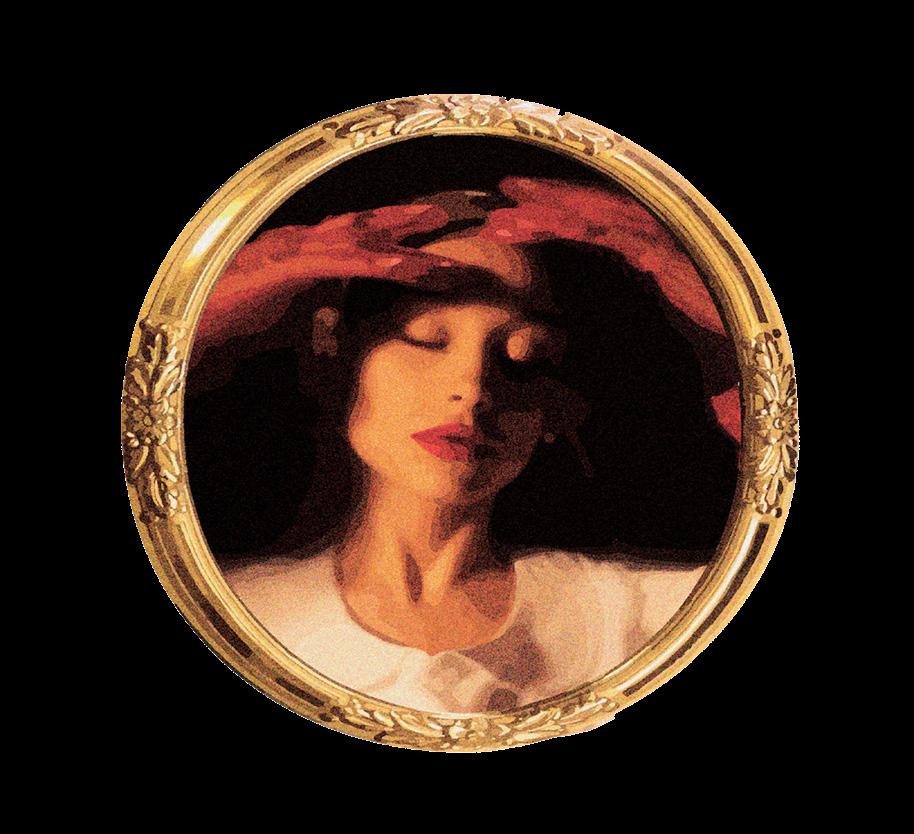
both her cosmetics brand, R.E.M. Beauty, and her starring role as Glinda in the aforementioned Wicked films, whose first installment is slated for a November release. Aside from this, Grande has worked on brief stints including a guest judge run on The Voice, a cameo in the star-studded 2021 film Don’t Look Up, and collaborations with The Weeknd on chart-topping remixes of his singles “Save Your Tears” and “Die For You.”
With this long-awaited new era, Grande appears to be here to stay; she recently became the first female artist to surpass one billion Spotify streams on 14 songs, making a teary appearance in a commemorative episode of the platform’s “Billions Club” series. In the episode, Grande reminisces on iconic successes over her expansive music career and suggests that her Eternal Sunshine chapter is only a new beginning, sharing that “I also feel like I haven’t even really started.” Even after celebrating the tenth anniversary of her debut album Yours Truly last year and landing her lifelong dream theatre role with Wicked, Grande’s comeback shows that she has plenty more to prove—her loyal fans eagerly await what’s next.
 Written
Written

in
Illustrations by Laura Pereira
Layout by Rachel Erickson
by Melissa Brugmann & Andy Meeker
“It’s About Time.”
A reflection on female representation at the Oscars
Written and illustrated by Lainey Nguyen | Layout by Niamh Cogley


The word “first” is still prevalent in many article titles regarding women in the film industry. Just last year, Michelle Yeo became the first Asian woman to win Best Actress at the Oscars. In 2022, Jane Campion became the first actress to receive multiple Oscar nominations for directing, and in 2021, Chloé Zhao became the first woman of color to win Best Director. These feats are massive considering the first Oscars was in 1929. I mean it’s been almost 100 years, and woman haves still yet to gain nearly the same about of recognition that men have in Hollywood
When Katheryn Bigelow became the first woman to win an Oscar for Best Director in 2010, she was the only woman nominated in the category. A look of vindication glazed over Barbara Strieshand’s expression when she opened the envelope, saying, “It’s about time”. Though I don’t remember watching this piece live, rewatching the video clip now provided me with the same sense of victory that Strieshand had. I wish this would have set off a momentum of female wins in this category, but it was not till 11 years later that another woman would win – Chloe Zhao.
The Academy, which decides the Oscars, is made up of more than 10,500 members in the industry, according to their website. The organization’s vagueness regarding who the members are and how to join the Academy is what adds to the prestige, yet also possible biases of the corporation. To become a member, one has to be endorsed by someone on the appropriate Branch Executive Committee. These members help decide who the nominees are and vote on the actual nominations. Most of the awards go to the nominee with the most votes, except the Best Film Award where a ranked-choice voting system is used. Needless to say, it is a very exclusive organization that is not transparent enough. The fact that there are many members still unnamed makes it seem like some kind of secret society. This leads me to question how fair the awards are. Historically, a large number of the members were white men, and right now only 33% of the Academy are women. This uneven statistic spikes concern about the diversity and fairness in the voting process. This year’s Oscars have certain requirements for movies to diversify the nominations which is definitely progress, but there is still history to be made for women and minorities within the industry.



Singin ’ in the Rain
A Lack of Sincerity in Hollywood
There are few who are not familiar with Singin’ in the Rain, as it has become a Hollywood classic since its 1952 release. The film introduces two Hollywood stars, Don Lockwood, played by Gene Kelly, and Lina Lamont, played by Jean Hagen. Their film studio encourages rumors of a romance between the duo to promote their upcoming movie, though Don has little patience for Lina. After the introduction of non-silent film, the pair is tasked with making a musical movie together. Unfortunately, Lina’s high-pitched voice is not fit for the role, so singer Kathy Selden, played by Debbie Reynolds, is hired to sing Lina’s part in the film. The film succeeds greatly, but the ruse fails when Lina is asked to sing live. Quick to think, Selden sings behind a curtain while Lina mouths the words. In an attempt to expose Selden as the true singer in the film, Don and his friend Cosmo, played by Donald O’Connor, raise the curtain and reveal Kathy to the audience. Singin’ in the Rain highlights the fake reality often portrayed by Hollywood stars, but this phenomenon is not reserved for the big screen and happens in real life. One of the most popular instances was in 2005 when Jay-Z cheated on Beyonce with Rihanna. This resulted in a year-long break between Jay-Z and Beyonce, but Rihanna’s publicist later admitted that he made up the rumor to promote Rihanna’s new single, “Pon De Replay”. Staged pap shots also fill tabloids, like when Hailey Bieber was photographed in a parking garage sporting a “Nepo Baby” T-shirt. There is a lack of sincerity among Hollywood stars, both past and present. If there is one lesson to take away from Singing in the Rain, it is that everything is not as it seems.
 Written by Ava Bedoya
Written by Ava Bedoya
Illustrated by Caroline Abella
Layout by Niamh Cogley



In a world where celebrities have constantly been under the watchful eye, the once impenetrable facade of glamor is swiftly crumbling. Social media platforms like Instagram and TikTok have entirely reshaped the roles and expectations of celebrities. Now, anyone can become famous, and viewers, guided by algorithms, choose whose content to consume. The rise of social media has trapped even the most prominent influencers, erasing the boundaries between their public and private lives. This shift towards widespread fame has portrayed celebrities as increasingly ordinary and less glamorous. This shift prompts questions about the consequences of revealing too much in the quest for authenticity, underlining profound shifts in how we perceive public figures.

In the earlier days of Hollywood, celebrities like Marilyn Monroe epitomized glamor. Using carefully curated images and limited media appearances, they were deemed untouchable figures. With privacy as a sacred value, any glimpses into personal lives were meticulously controlled. Today, celebrities’ extreme accessibility creates expectations of them being open books to fans. For instance, Sydney Sweeney’s every move, even relationship rumors, is discussed in the filming of Anyone But You. From talk show appearances to Hot Ones Challenges, she exemplifies the modern celebrity’s challenge in balancing personal privacy with the demands of public engagement. This shift reflects the evolving landscape where celebrities, despite the expectations of openness, still grapple with the controlled narrative of their public lives. As fans demand authenticity, celebrities learn how to engage with the public.
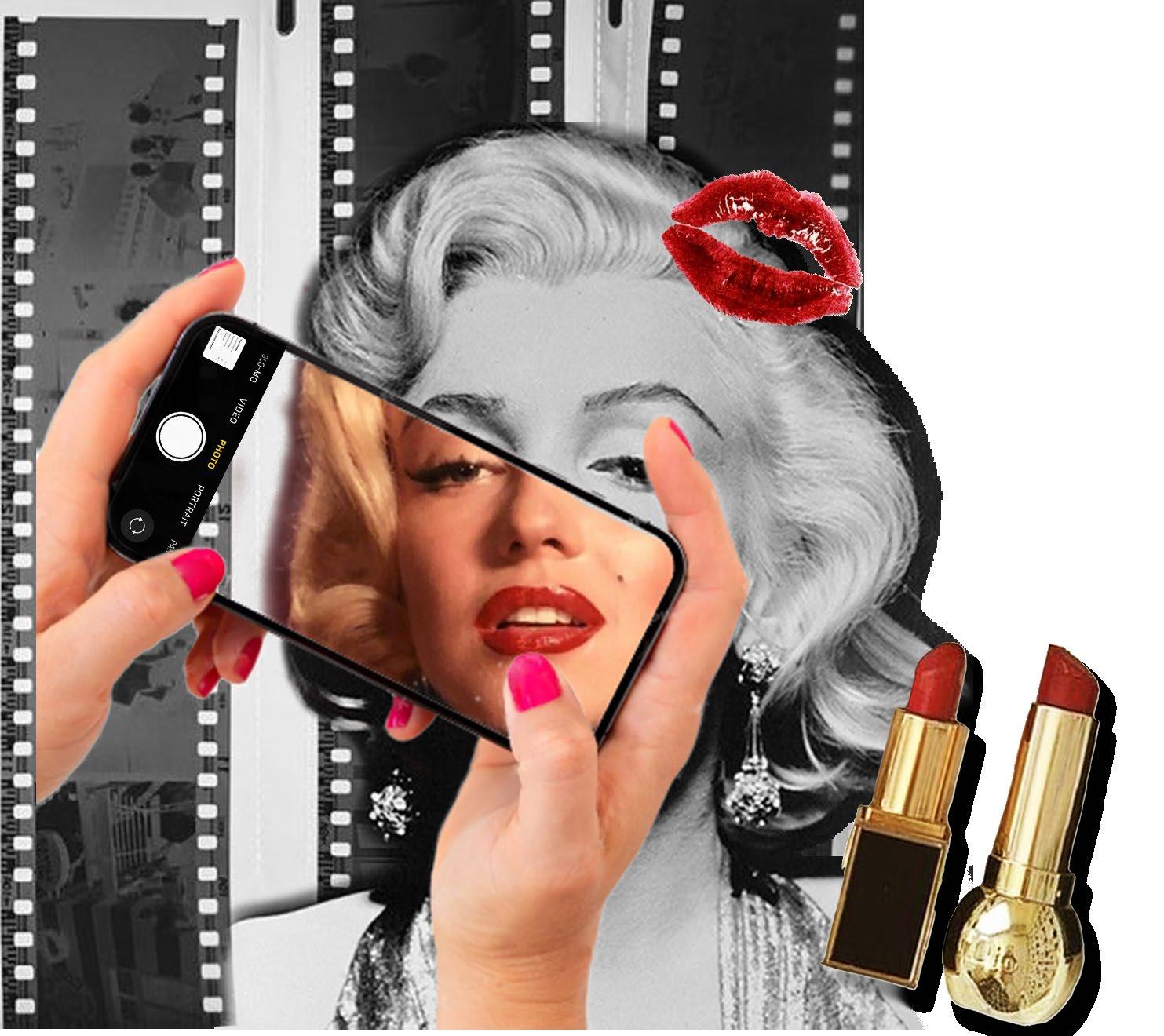
The modern entertainment sphere leaves little room for illusive glamor. Accessibility and transparency blur public and private boundaries, prompting questions about the consequences. From celebrities’ once-guarded image to today’s active social media, the shift reflects a change in perceiving public figures.
 Author: Moira Minnich
Author: Moira Minnich
Layout & Illustration: Morgan Mueller
The White Horse
Studio 54 was the hottest club in not only New York City, but the world. The parties were so grandiose and outrageous that A-listers and party-goers flew across the country just to get a taste.
The elite crowd ranged from Andy Warhol to the President of the United States. It hosted historical events including Bianca Jagger’s (socialite and first wife of Mick Jagger) iconic birthday party, where she rode on a live white horse. In many ways, a white horse was an appropriate symbol for Studio– top of the line and preserved for the upper crust.
Studio 54 was founded by Steve Rubell and Ian Schrager, two college roommates from Syracuse University. Steve was a Lawyer, and Ian entered the hospitality business—a match made in heaven. The studio’s location was not ideal or favorable at the time. But in 1977, the city was ready for something different. Designed by stage crew and Broadway designers, an elevated dance floor that hung overhead the main dance floor was just one of its main attractions. Studio was bound to catch the eye of any and everyone.
With a guest list of 2,500 and 4,000 attendees at the door opening night, its premiere made headlines the next day. Liza Minelli, Halston, and Andy Warhol were all in attendance; they and others of their crew would go down into history as Studio 54’s main clique. Yet, the chic and glamorous whirlwind went on for just 33 months.
At the time of its opening, a permanent liquor license wasn’t obtainable like Rubbel and Schrager had hoped. Studio 54 was operating on a day-to-day catering license that was seized by police, which ultimately led to their doors closing.
Written by Paolo Liacci
Illustrations by Amelia Ferguson
Layout by Rachel Erickson
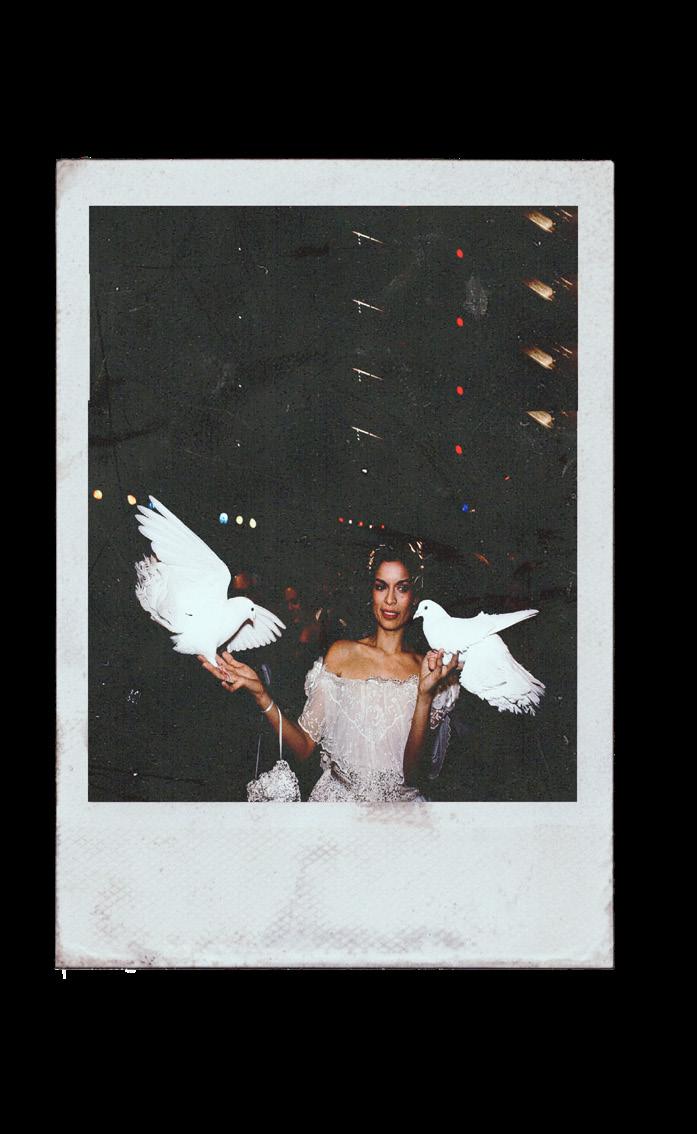



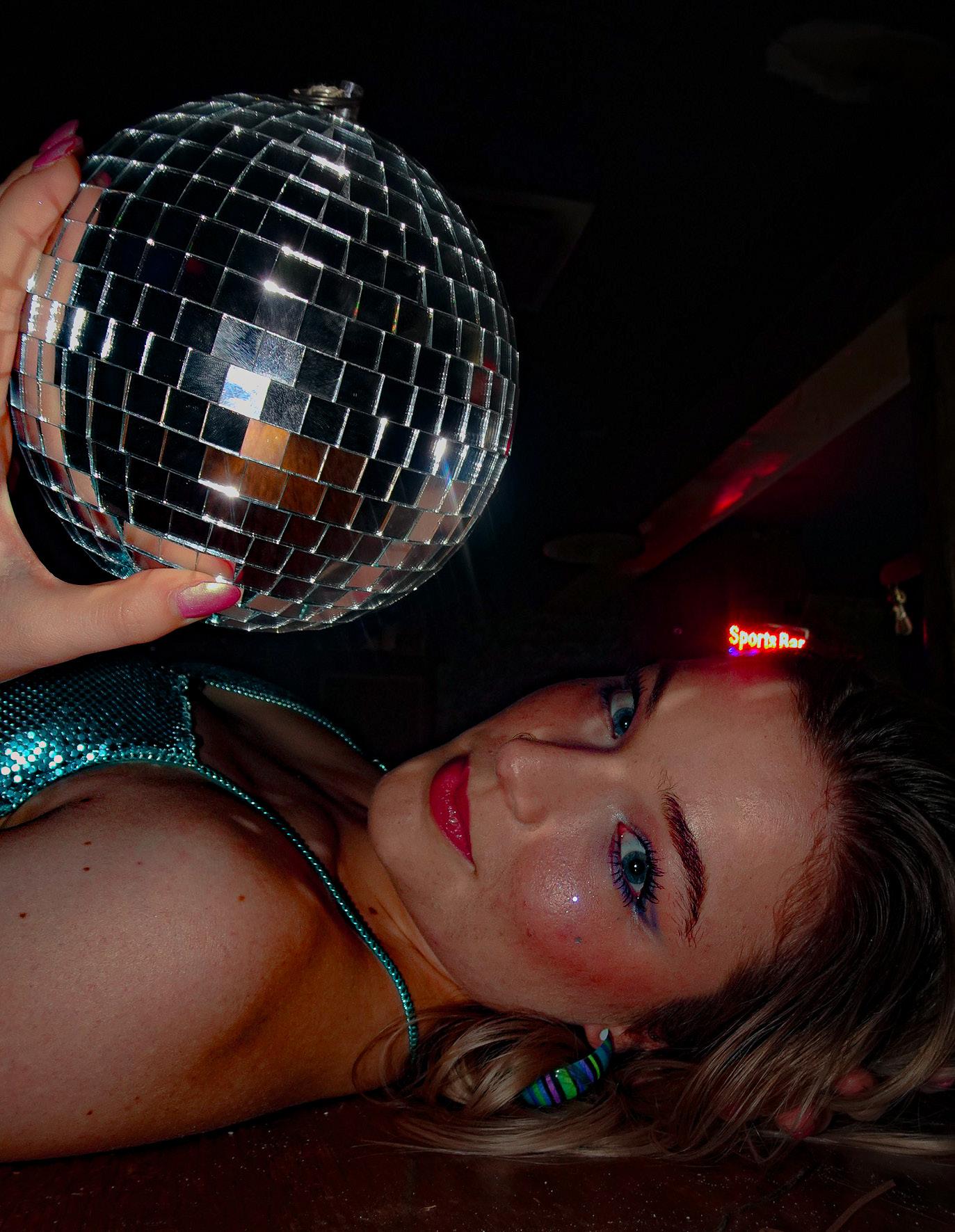
25
The Eternal Glamour of the cigarette moment
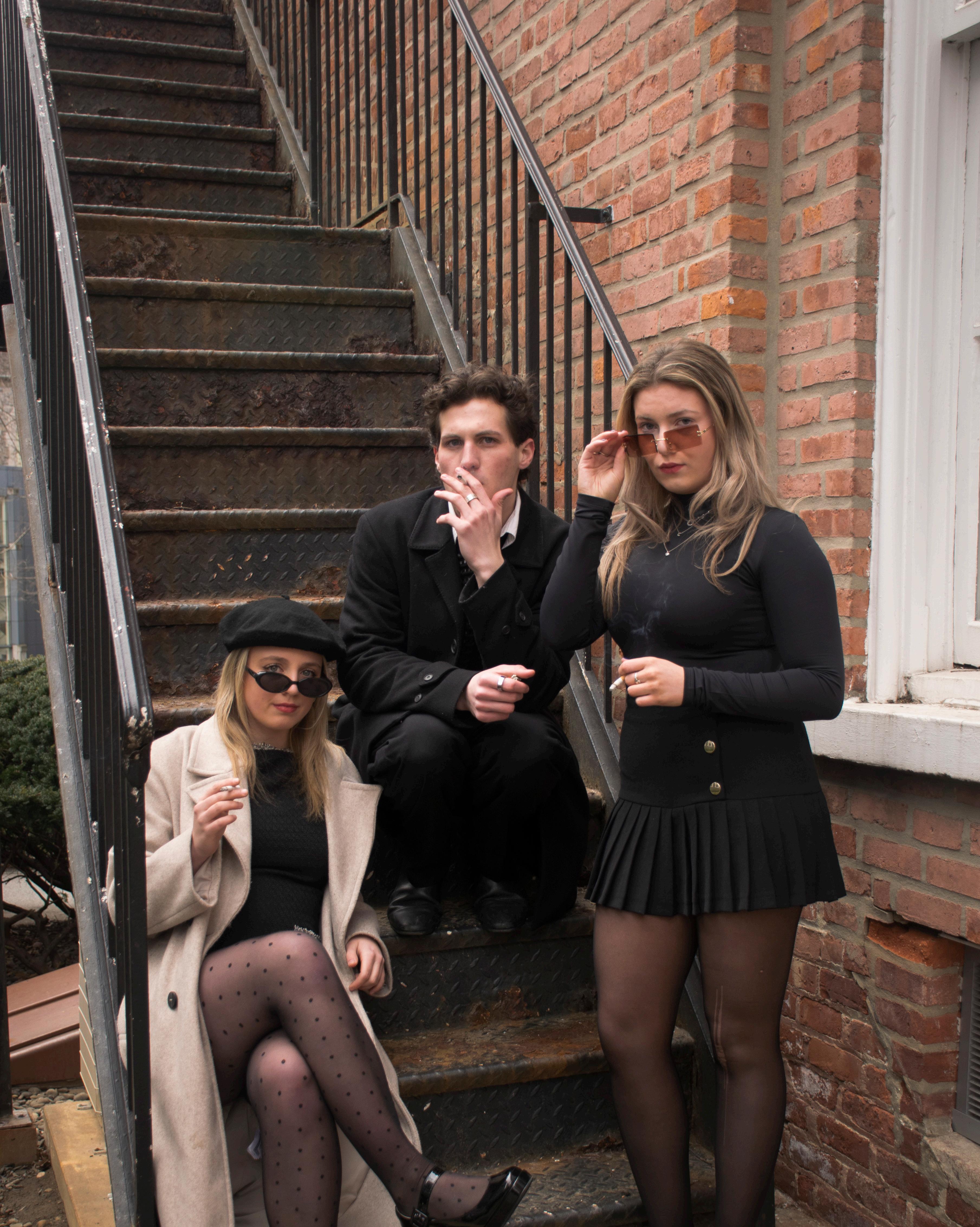 Written By Claire Fink
Photographed by Kayla Hart
Modeled by casey martin, plum riga, and carson waldron
styled by mia garcia
Makeup by emma leonardi
layout by carson waldron
Written By Claire Fink
Photographed by Kayla Hart
Modeled by casey martin, plum riga, and carson waldron
styled by mia garcia
Makeup by emma leonardi
layout by carson waldron
Hollywood’s golden age bred the connection between cigarettes and glamor. During this era, tobacco companies and their manipulative marketing tactics manufactured the pervasive influence of cigarettes in society still present today. They exploited Hollywood romance and the women’s empowerment movement to maximize their profits.
Pre-1920s, patriarchal society deemed it inappropriate for women to smoke outdoors. Edward Bernays, a notorious marketing mogel and nephew to Sigmund Freud, capitalized on this trope by portraying smoking cigarettes as a rebellious act. In 1929, he persuaded a group of fashionable young women to march down Fifth Avenue during the Easter Parade and smoke their “torches of freedom.” He helped transform the cigarette into “a sign that each woman was their own person.” Smoking suddenly became a feminist act, one that didn’t exclude women of color like many other aspects of the suffrage movement.
When typical ads were insufficient in engineering enough female consumption, tobacco companies took to the silver screen: in a sad or happy moment–or any emotion in between–the actresses would also have their cinematic cigarette moment. The symbolic cigarette perfectly accompanied any moment to entrench the full depth of emotion and romanticized experience conveyed by the characters in each film. As a result of Hollywood’s unique influence on society, the strategic placement of cigarettes in cinema encouraged women to buy them to portray similar profundity to the iconic actresses they admired.
The contemporary use of cigarettes as a prop in movies and TV recruits new smokers today despite the known health risks associated with smoking. Evidently, the marketing techniques employed by tobacco companies in the 20s and on created an immortal allure that still communicates a certain social charm. The engineered aggrandizement of smoking through golden age films thus fashioned the eternal glamour of the cigarette moment.
How Hollywood Glamour Suppresses Women’s Identities Priscilla:

 Written by Sarah Shanahan
Photos by Andy Meeker
Modeled by Sarah Larrea and Mariano Serber
Styled by Warda Hassan
Makeup by Areeba Malik
Layout by Maddie Boone
Written by Sarah Shanahan
Photos by Andy Meeker
Modeled by Sarah Larrea and Mariano Serber
Styled by Warda Hassan
Makeup by Areeba Malik
Layout by Maddie Boone
The past few years in lm have been huge for Hollywood’s obsession with biopics–we got Elvis, Rocketman, Bohemian Rhapsody, Priscilla, Oppenheimer, and Maestro, to name a few. Most blockbuster biopics have chosen some iconic gure – usually a man – to highlight, bringing out new details of their lives and reinvigorating fans with selective storytelling. This dynamic brought about the cultural phenomenon that was Baz Luhrmann’s Elvis (2022).
Sophia Coppola answered this biopic with a challenge to Elvis’ legacy: Priscilla (2023). While Luhrmann’s Elvis focused solely on the visually stunning, deeply compelling story of the singer’s career and persona, Coppola’s Priscilla shone a light on the star’s lesser-recognized counterpart. Coppola shifted the focus away from Elvis’ starlit career and his dazzling stage presence and instead focused on his fallibility through the lens of the pair’s complex relationship.
The lm o ers a counter-narrative to the starstudded, idyllic vibe of Luhrmann’s Elvis. It highlights Priscilla’s point of view as she moves away from her family to be with him, renders herself completely dependent upon him, and ends up trapped in a broken marriage. Coppola highlights the power dynamics of the couple’s 10-year age gap and Elvis’ gradual control over Priscilla’s life.
What began as a romantic tryst in Germany ended in Elvis controlling Priscilla’s appearance, activity, education, and life.
A key ingredient in Coppola’s project was the glamor of the 60s and 70s, and how this was used to manipulate Priscilla’s identity. Elvis used the 1960s female stereotype to objectify Priscilla and assert a masculine dominance in their relationship. In Coppola’s take, the audience sees how Priscilla morphed her physical appearance to t Elvis’ idea of a beautiful, 1960s woman. He wants her to have voluminous long hair, fake eyelashes, popular makeup, and the trendiest new clothes. He sees her as an accessory to his rockstar lifestyle, and he uses stereotypical glamor to suppress her identity and better t her into his life. A scene at Graceland perfectly captures Coppola’s point: Priscilla stands in the doorframe in a perfect, pink dress, bearing an uncanny resemblance to a doll in a box.
The lm’s 1960s glamor visually demonstrated the control that Elvis had over Priscilla’s life and identity. The changes in her physical appearance throughout the lm aligns directly with the degree of his control in their relationship. She goes from a normal girl to a glamorized doll as he exerts in uence over her life when she moves to Graceland, begins to forgo her education, and puts him above herself. As she struggles away from his dominance, her physical appearance exhibits this: her hair falls more naturally and she owns her looks, rather than dressing herself as he would like.


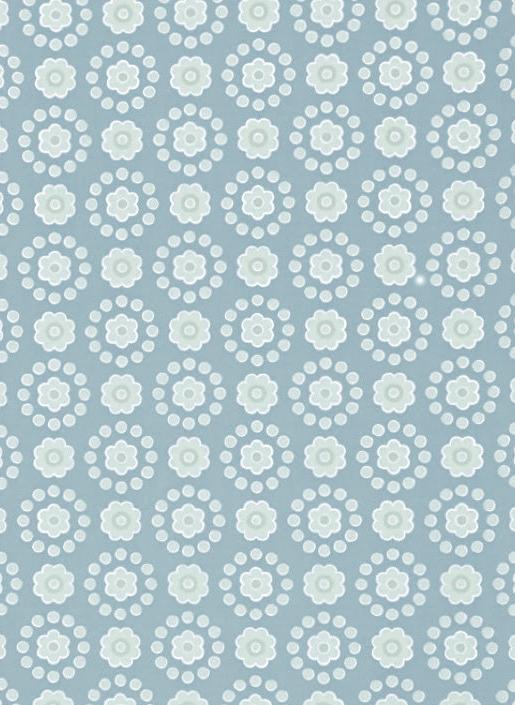
29

The Era of Being Coquette
Written by Ella Keddy
Photos by Leah Staurt
Modeled byVictoria Perez-Huerta, Ella Keddy, Camille Rivas, and Meg Blaustein
Styled by Natalia Alvarez
Make-Up by Natalia Alvarez
Layout by Lucia Marino
30
Pink bows, pearl necklaces, lace, and frilly skirts aren’t just girly– they’re ‘coquette’, an aesthetic that has taken the internet by storm. De ned by the Merriam-Webster dictionary as “a woman who tries without sincere a ection to gain the attention and admiration of men,” Gen Z has created an entire lifestyle around the word. is aesthetic craze was conjured from the TikTok trend of tying pink bows onto random items but has ventured to the reclamation of femininity as something to embrace. Fordham Alum Lana Del Ray’s makeup looks, song lyrics, and fashion sense have made her a key gure in the coquette community. Her song “Let the Light In” has been an anthem of the aesthetic, also popularized by TikTok.
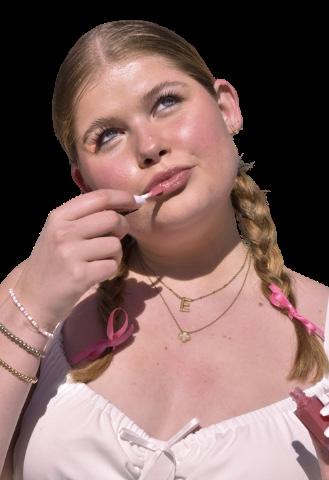

Beyond embracing femininity, the coquette aesthetic promotes playful and romantic ideals many tend to hide from the public gaze. Barbie, which emphasized a relatability about being a woman and portrayed a coquette-esque style, certainly in uenced the trend. Almost every girl can relate to feeling like it was a negative thing to be a woman, something that the Barbie movie captures perfectly. In addition, some social media terms like “girl dinner,” “girl math,” and “I’m just a girl” have played a hilarious role in in uencing this trend. Many have taken these terms in TikTok videos, claiming them in a way that girls shouldn’t have to do certain things or can do certain things simply because they are a girl.
While some may nd this aesthetic “too much” because of its over-the-top nature, this trend is here to stay for the foreseeable future. is playful, romantic, and girly aesthetic is not something to fear but embrace! Some nal advice is to tie a pink bow on your problems. I promise that it will solve them.










 Modeled by Andy Meeker & Julia Patterson
Modeled by Andy Meeker & Julia Patterson



 Photography by Wesley Scott
Modeled by Henry Pelmas and Audrey Ho man
Styling and Makeup by Lauren Walczyk
Photography by Wesley Scott
Modeled by Henry Pelmas and Audrey Ho man
Styling and Makeup by Lauren Walczyk
 Written by Julia Patterson
Cogley
Photographed by Niamh
Modeled by Maia Munich, Kamryn Chubb, Emma Leonardi, Haniyyah Usmani
Styled by Kamryn Chubb
Make-Up by Molly Fitzpatrick
Written by Julia Patterson
Cogley
Photographed by Niamh
Modeled by Maia Munich, Kamryn Chubb, Emma Leonardi, Haniyyah Usmani
Styled by Kamryn Chubb
Make-Up by Molly Fitzpatrick



 Photographed by
Modeled by Kelly Cimaglia, Lainey Nguyen, Gabrielle Gonzales, Roxanne Fernandes
Photographed by
Modeled by Kelly Cimaglia, Lainey Nguyen, Gabrielle Gonzales, Roxanne Fernandes












 Written
Written






 Written by Ava Bedoya
Written by Ava Bedoya





 Author: Moira Minnich
Author: Moira Minnich




 Written By Claire Fink
Photographed by Kayla Hart
Modeled by casey martin, plum riga, and carson waldron
styled by mia garcia
Makeup by emma leonardi
layout by carson waldron
Written By Claire Fink
Photographed by Kayla Hart
Modeled by casey martin, plum riga, and carson waldron
styled by mia garcia
Makeup by emma leonardi
layout by carson waldron

 Written by Sarah Shanahan
Photos by Andy Meeker
Modeled by Sarah Larrea and Mariano Serber
Styled by Warda Hassan
Makeup by Areeba Malik
Layout by Maddie Boone
Written by Sarah Shanahan
Photos by Andy Meeker
Modeled by Sarah Larrea and Mariano Serber
Styled by Warda Hassan
Makeup by Areeba Malik
Layout by Maddie Boone





